Eco-Ed kids find beauty (and tadpoles) at Oakland creek
By Sharon Beals
It could have been the El-Nino-green willows billowing in the bird-songed breeze, or the buckeyes, their branches still full of stunning white blooms. Or maybe it was simply being out of school, and instead, standing on a tall-grassed path alongside a pooling creek, that inspired a round-faced eight-year-old boy to lower his binos and beam at me: “This is just so BEAUTIFUL!”
I’m still replaying this shared moment of joy in my mind, along with many others collected during two recent field trips to Arroyo Viejo Creek in Oakland with Golden Gate Bird Alliance’s Eco-Education program.
The children – third graders from the Korematsu Discovery Academy — were there to learn about their local watershed, and I was there to document what might be some of GGBA’s most important work: providing environmental education to children in the underserved communities of East Oakland, North Richmond, and Southeast San Francisco where funding for science education in schools often falls short.

GGBA collaborates with teachers to introduce third, fourth, and fifth graders to the ecology of their local environments, first in their classrooms and schoolyards and then on field trips to nearby creeks, wetlands, and finally the Pacific Ocean. Students’ families are also invited on the trips to the ocean, and for many it is a first-time experience. Over the course of the year, the children get hands-on experience with habitat restoration. Since its start in 1999, the program has served over 15,000 students, plus thousands of family members.
Marissa Ortega-Welch, who has been leading Eco-Ed field trips for six years, was our teacher and guide for the day. She arrived with an eager tribe of children, teachers, aides, and a few parents via city bus. (GGBA’s tight budget can’t afford chartered buses.) In clearly enunciated Spanish and English, she introduced the Audubon volunteers who would aid and abet their curiosity that day and prescribed a few ground rules. Both of these outings were great lessons in science and nature vocabulary for this lapsed Spanish student!
The students were sorted into two groups that would rotate between the day’s activities. The nature walkers were shown how to use binoculars (find the bird first, then raise the binos to your eyes). They clustered around folding field guides showing local birds with the same fascination they might have given a new video game.
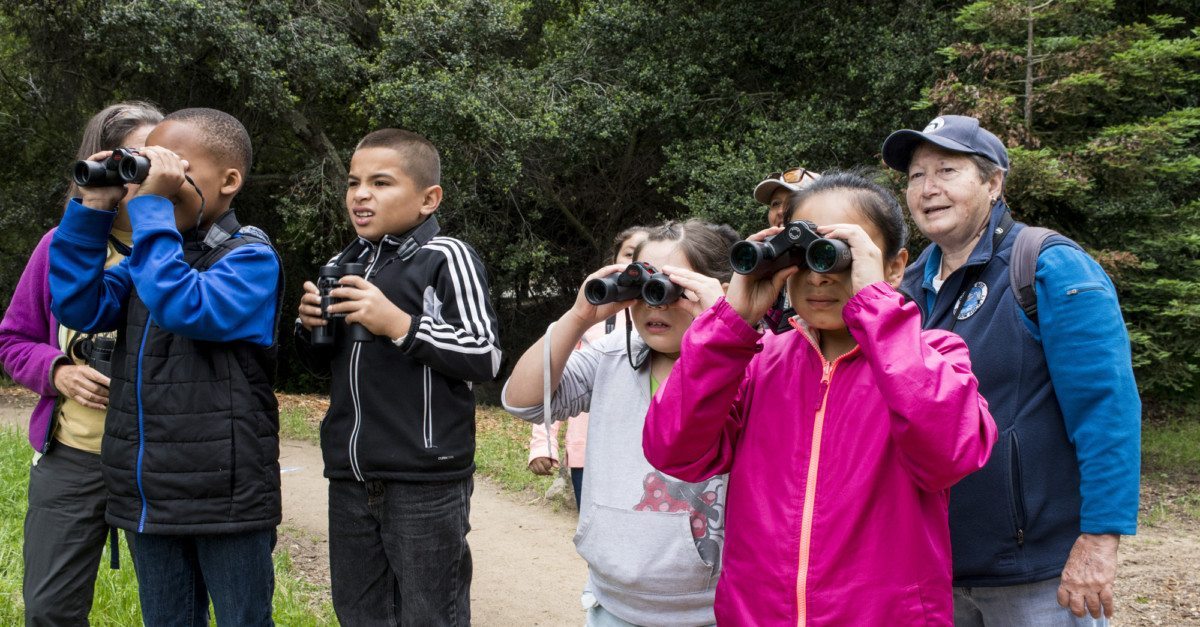
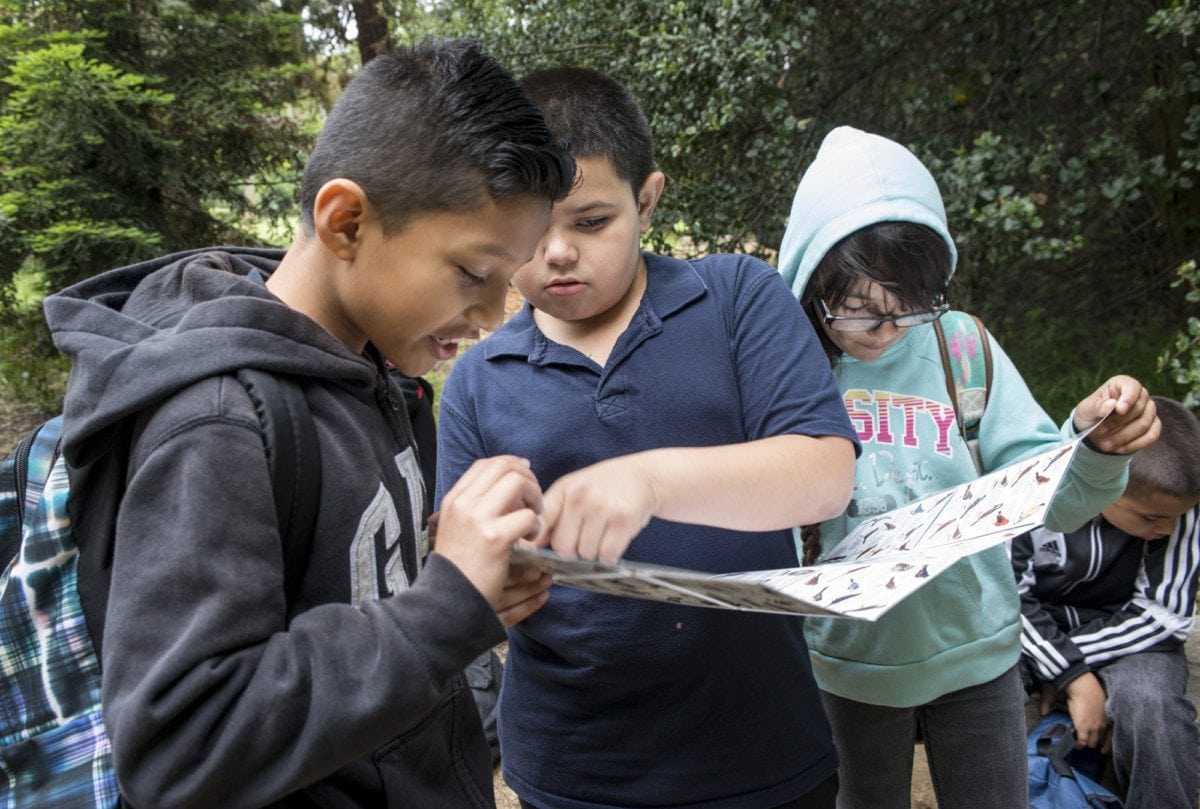
Volunteers barely managed to restrain their charges from rushing the first birds of the day — Wild Turkeys feeding in the grasses nearby — before a Western Bluebird was spotted proudly by one of the girls. The children searched the ground for robins and the trees for heard-but-not-seen juncos and flycatchers. Along the way, Eco-Ed volunteers introduced them to valley oaks, cow parsnips, and California poppies, and on the logs in a sunny clearing they found a fast-moving lizard and some slow-moving spiders.
From the bridge over the creek they enlisted their binos to look for dragonflies, and on the trail back stopped to inhale the sun-warmed scent of pink native roses.
The other half of the class gathered with Marissa at the creek for a crash course in stream biology. I was reminded of my free-range childhood on the outskirts of Seattle: coasting my Raleigh a mile downhill to spend afternoons in the willowed shade of Matthews Creek, a wider, slower moving version of Arroyo Viejo. Though I’m sure that’s where my affinity for watersheds was born, I wish there had been someone to teach me what I might have seen besides polliwogs and the occasional small trout.
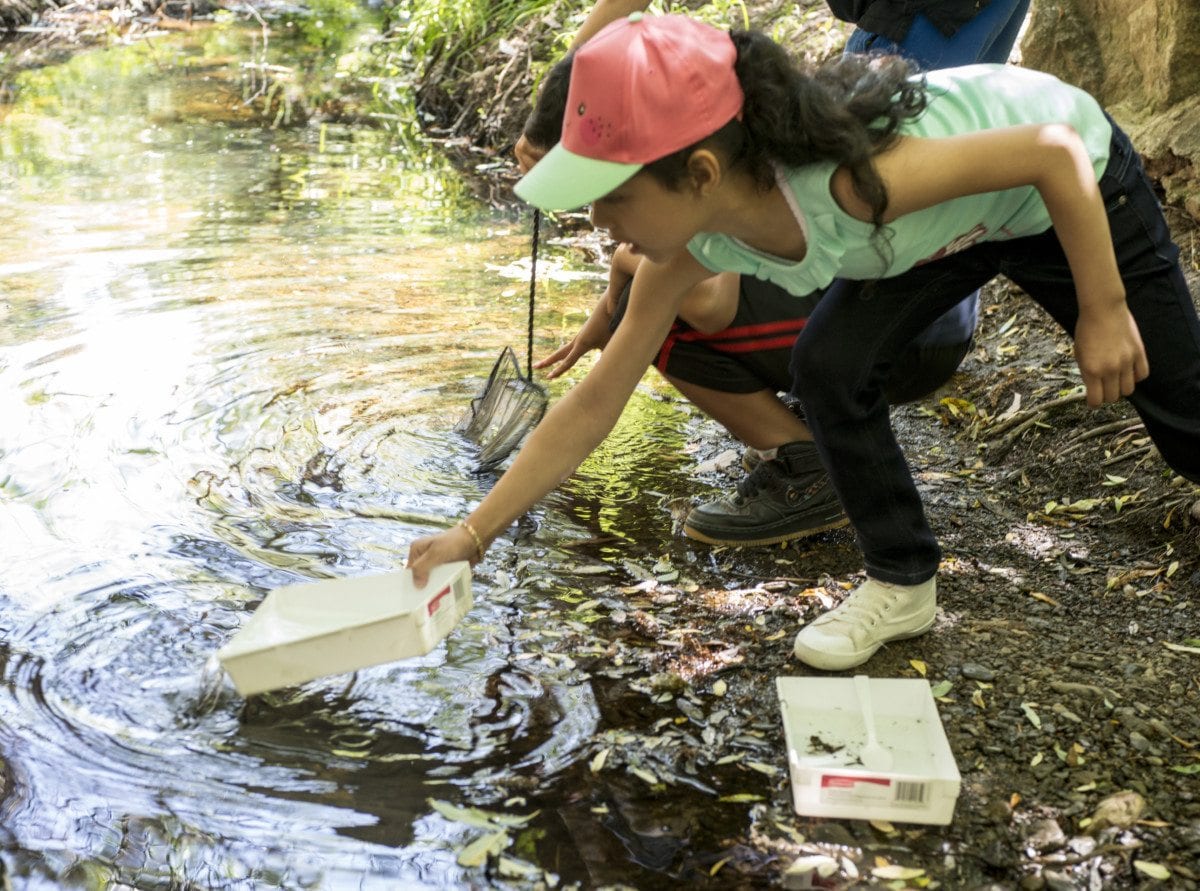

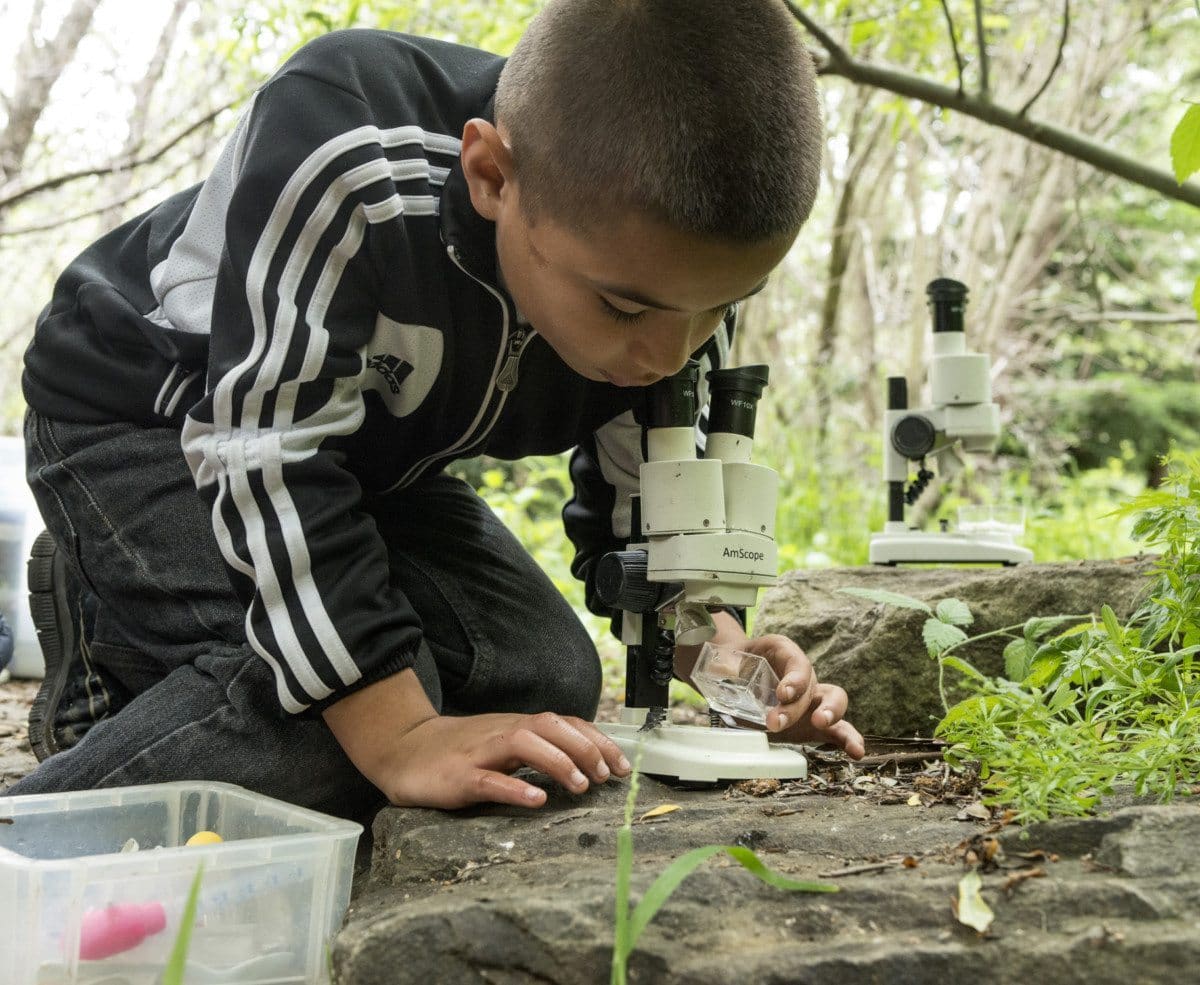

These budding naturalists were learning some citizen science: how to lift and replace rocks to net some of the stream-life that might be living beneath them, to put their catch safely into a creek-filled tray, and to search for the life in it with handheld magnifiers. In this outdoor laboratory, they even had microscopes to examine the anatomical details of the tiny life they’d discovered.
What had camouflaged itself as a bit of algae became a dragonfly nymph; the small brown dot hiding under a leaf tried out to be a big-eyed translucent tadpole of a Sierran Treefrog. One triumphant find was the larvae of a mayfly, which Marissa explained was a sign of a healthy stream ecosystem because of the larvae’s vulnerability to toxins. That mayfly and other aquatic life can thrive in tat environment because of years of work by the Oakland Zoo to restore this little stretch of Arroyo Viejo Creek. It wasn’t just the children who were learning watershed ecology!
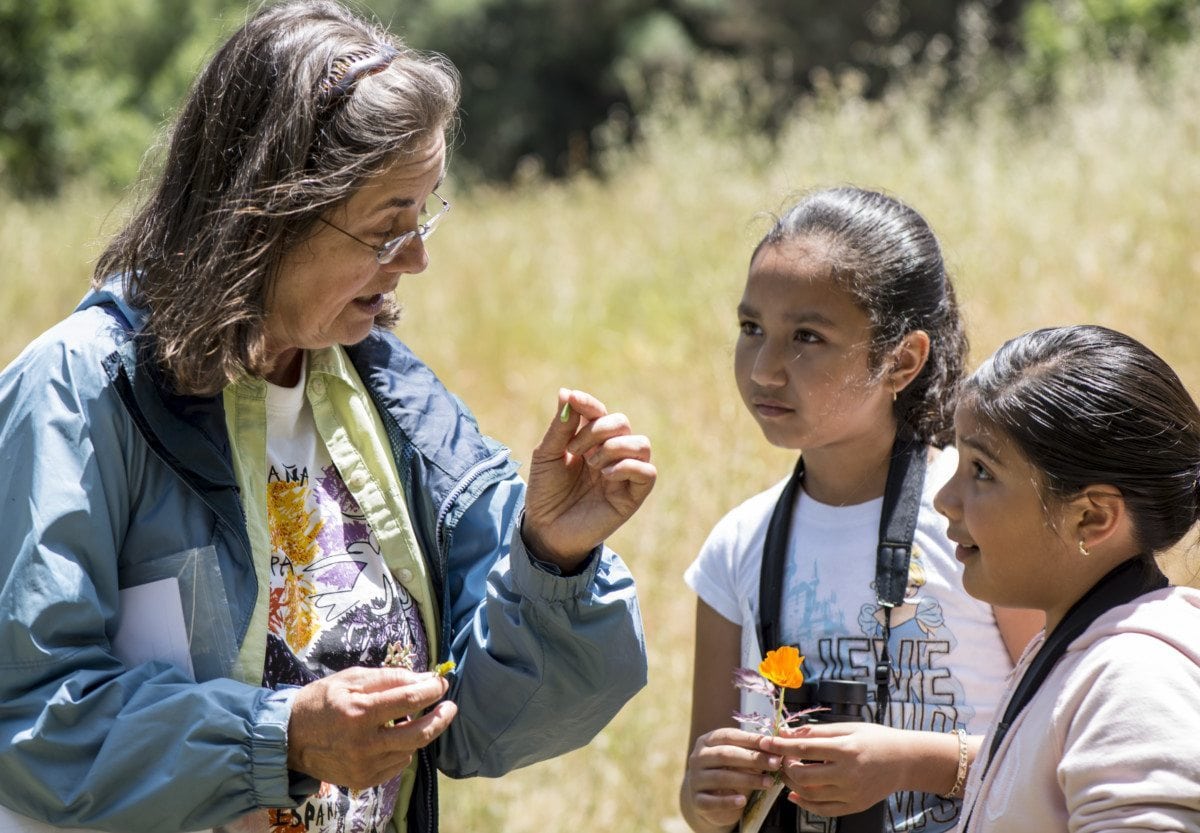
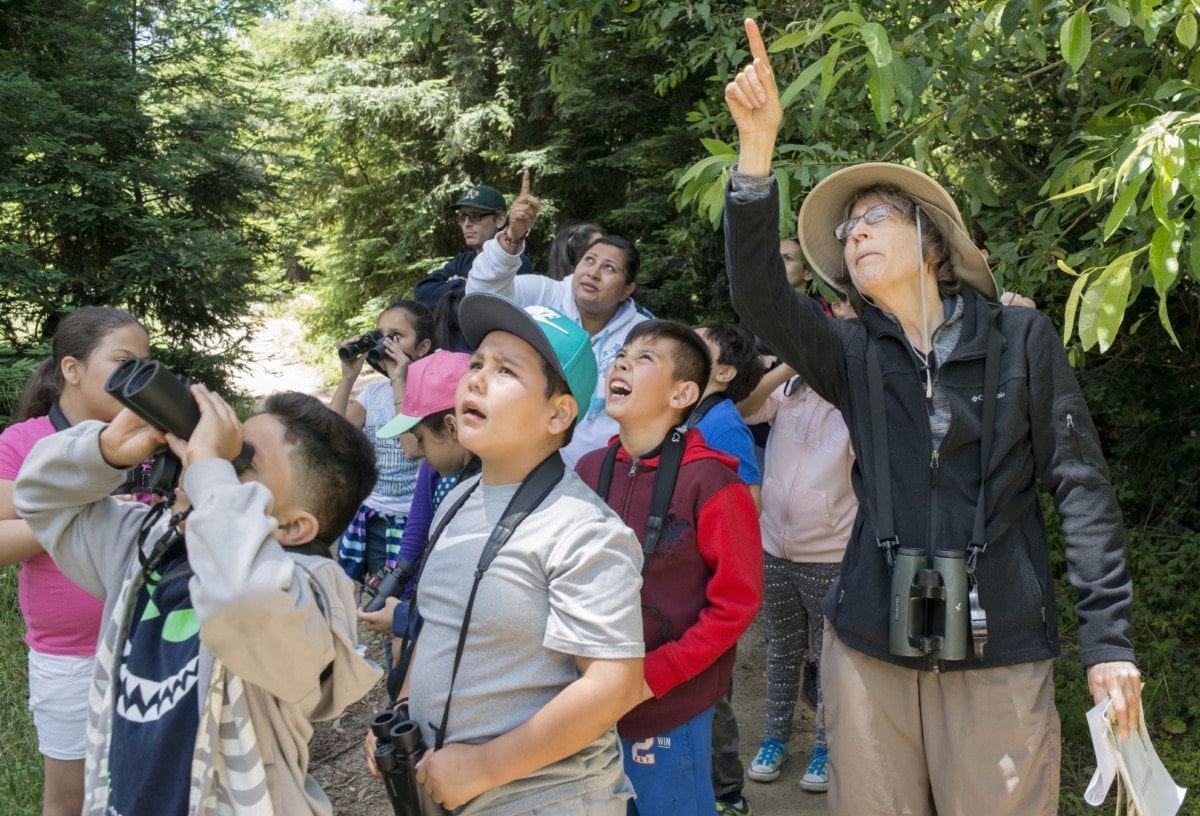
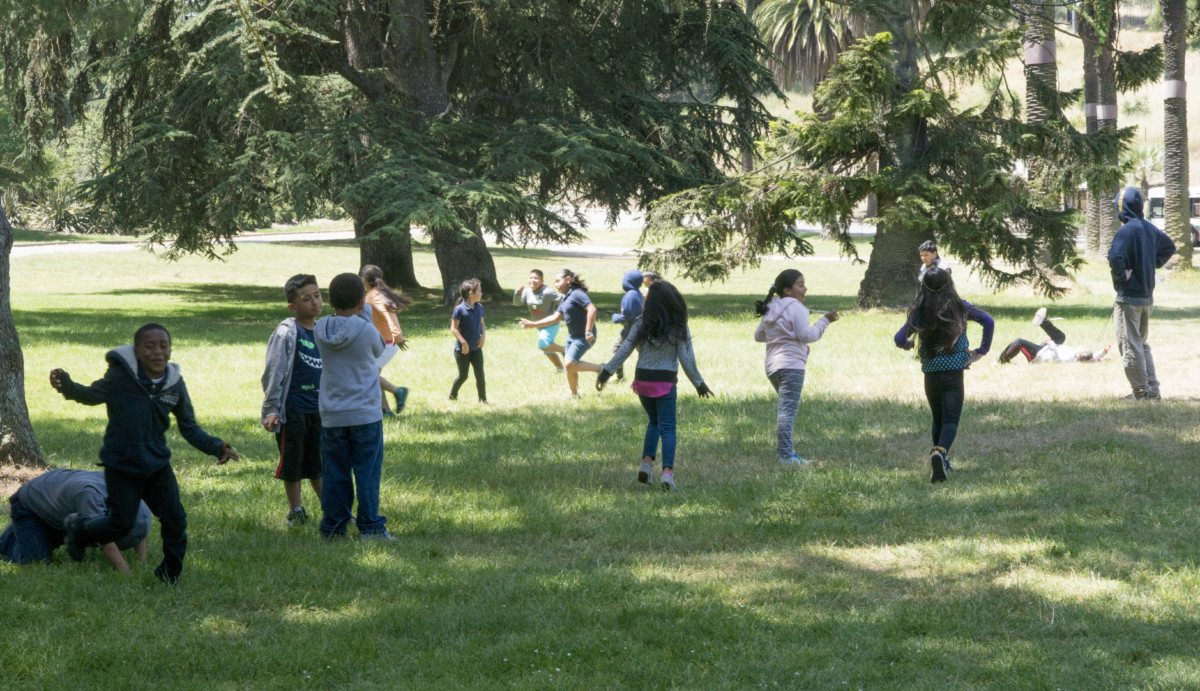
I took a lot of photos but that un-photographed moment with the boy with the binos is still emblazoned in my mind, along with mental snapshots of so many children completely and instinctively taking to the natural world.
As someone who came to understand my own environmental impact later in life, I can’t help but think of the benefits of this early guidance. Perhaps this boy, his classmates, and their families will become committed stewards of the natural world they will inherit. If Golden Gate Bird Alliance has anything to do with it, the chances are good.
Golden Gate Bird Alliance is seeking volunteers to help with Eco-Education field trips during the 2016-17 school year. Flexible schedule that can be tailored to fit your work or travel plans. Choose from a series of training dates and locations in September. (Dates to be determined over the summer.) Email Anthony DeCicco to be notified when training dates are set.
Sharon Beals is a San Francisco-based fine art and documentary photographer. A citizen naturalist, she is the author and photographer of Nests: Fifty Nests and the Birds that Built Them, her invitation to those who might never have picked up a pair of binoculars to learn about the lives of birds and their survival issues. View her work at http://www.sharonbeals.com.
